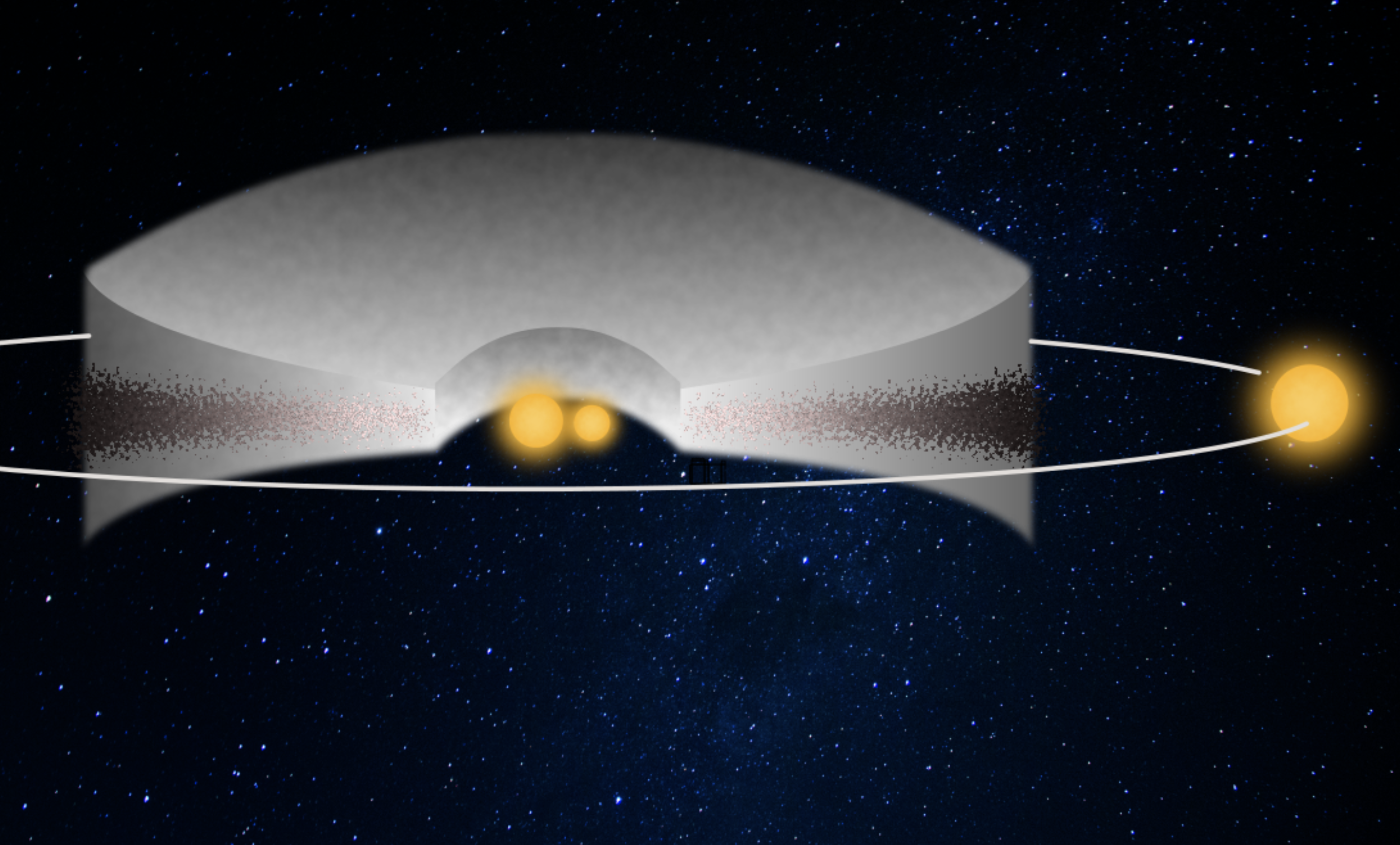A group of NPF scientists investigated the lifetime of protoplanetary disks in triple stellar systems.
A common result of star formation is that most stars are created as part of multiple stellar systems. We also know that the formation of protoplanetary disks is a natural by-product of star formation and, therefore, protoplanetary disks are expected to be found in multiple stellar systems.
It is thought that the lifetimes of disks in multiple stellar systems may be shorter than those of circumstellar disks around single stars, since they are in a more hostile environment, where irradiation and photoevaporation (i.e., the interaction of the star with the material in the disk closest to it) by the stars in the system may be more extreme than in disks around a single star. However, until now there has been no theoretical study quantifying these timescales for disks in triple star systems.
A recent research led by María Paula Ronco, postdoctoral researcher at the Millenium Nucleous for Planetary Formation (NPF), studied the time evolution of disks in triple hierarchical stellar systems (see the image illustrating the note), in which the disk is around a binary stellar system and also has an external stellar companion. In this configuration, the disk is affected by the torques (the capacity of a force to produce a twist or rotation around a point) produced by the inner binary system as well as by the outer star, which generate a cavity inside and truncate it on the outside, respectively. Furthermore, there are also additional effects to take into account, such as photo-evaporation (the effect of “dissolution” of the disk caused by the continuous “bombardment” with high-energy photons in the vicinity of the star in formation) and viscous accretion (the process by which mass of the disk, by a sort of “friction” with the rest of the disk is approaching the star until the star “acquires” this mass).
The research, published in the prestigious scientific journal Astrophysical Journal, also involved NPF associate researcher Octavio Guilera, research associate Jorge Cuadra, doctoral student Camilo Fontecilla, and the center’s director, Amelia Bayo.
To study and be able to estimate the lifetime of protoplanetary disks in triple hierarchical stellar systems, the researchers developed a model that computes or determines the structure of the disk and its evolution in time. “We performed numerical simulations by varying some parameters of the disk, such as its mass and viscosity, and of the triple stellar system such as the masses of the stars and their separations. In addition, we applied the model to the quadruple hierarchical star system HD 98800, which is formed by two binary star systems A and B orbiting each other, one of which, system B, has a circumbinary disk around it,” says Paula Ronco.
“The disk in this system is intriguing because it is an old disk, thought to be about 10 million years old (when normally protoplanetary disks dissipate/disappear in less than 5 million years) and still has large amounts of gas, which makes it the perfect scenario to apply our model, and try to understand why and how it has managed to survive for so long. Although HD 98800 is a quadruple star system (and not triple as our model), it can be approximated to the outer binary system, called system A, as if it were formed by a single star”, adds the astrophysicist.
The most important result the team found from their simulations is that, despite the mechanisms that cause the disk to lose mass, either by viscous accretion or photoevaporation, disks in triple systems are able to last for several million years, even longer than disks around single stars under certain circumstances, which could be favorable for planetary formation. “On the other hand, with our model we were able to explain the age of HD 98800 B, its observed mass and the lack of a disk around the binary system A that probably photoevaporated faster,” says Octavio Guilera, who is also an Adjunct Researcher at Conicet.
The next steps of the research, says Ronco, consist of simultaneously studying the gas disk with the disk of dust solids to evaluate the fate of this component, which is fundamental for planetary formation.
